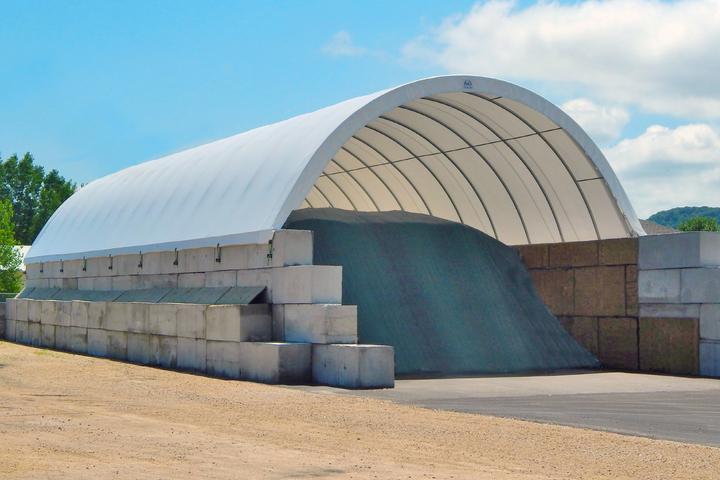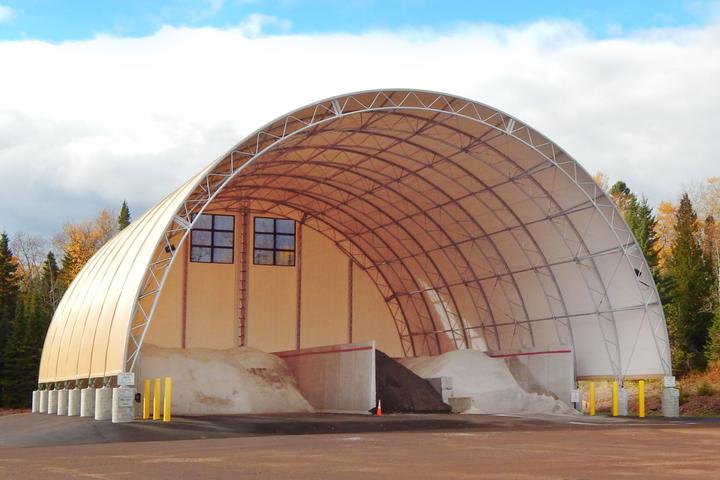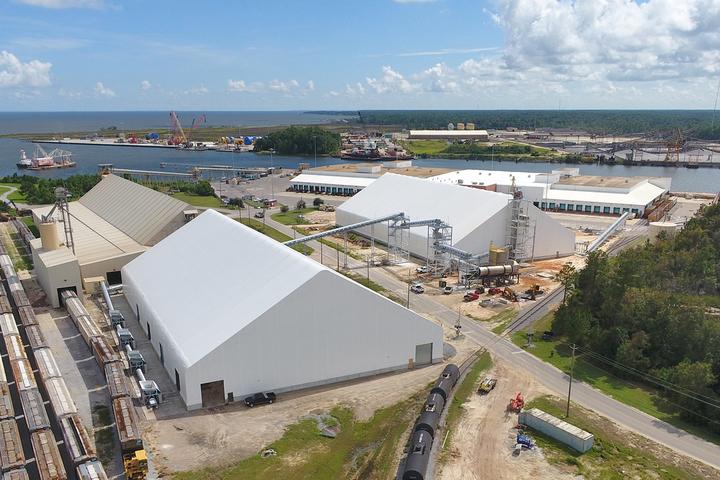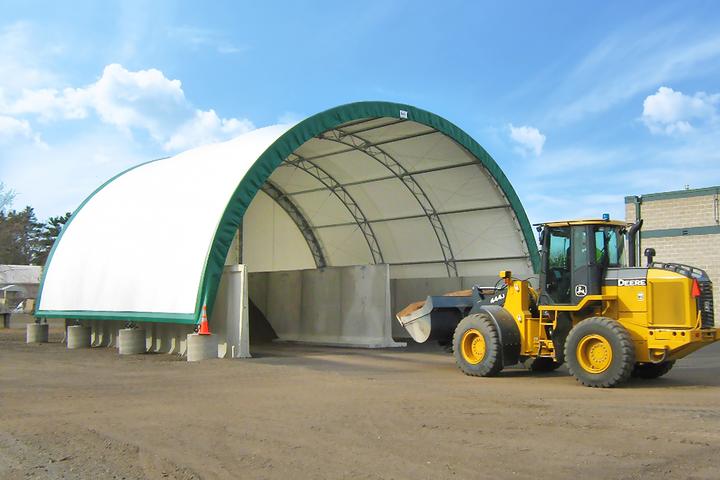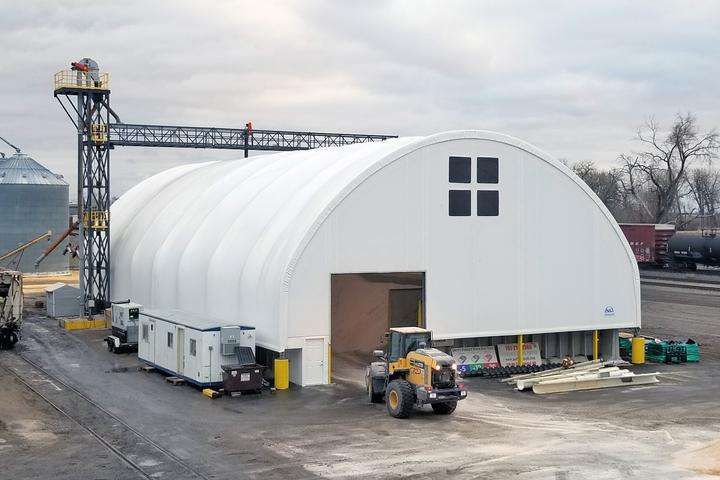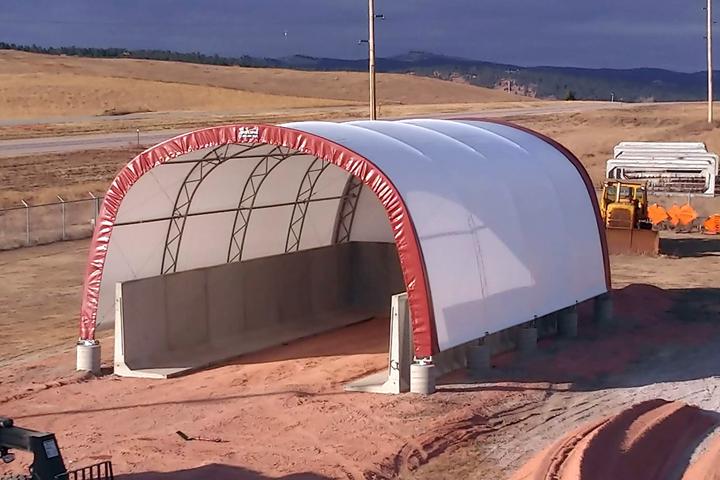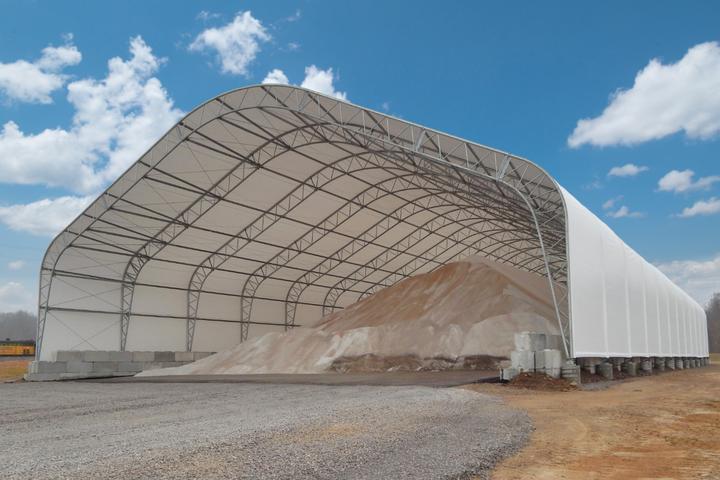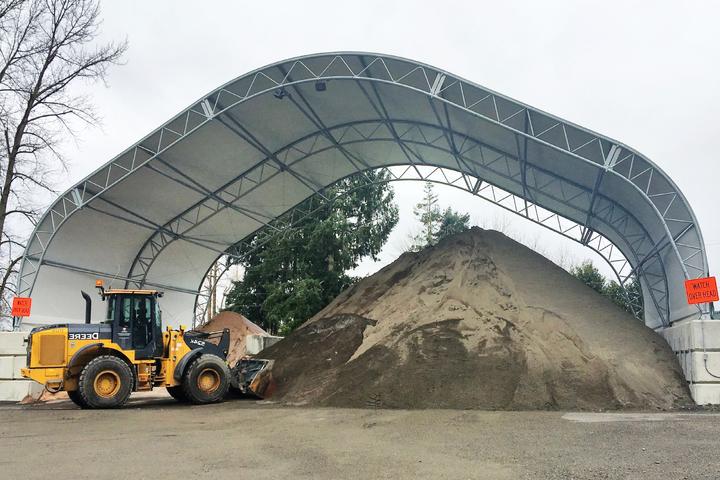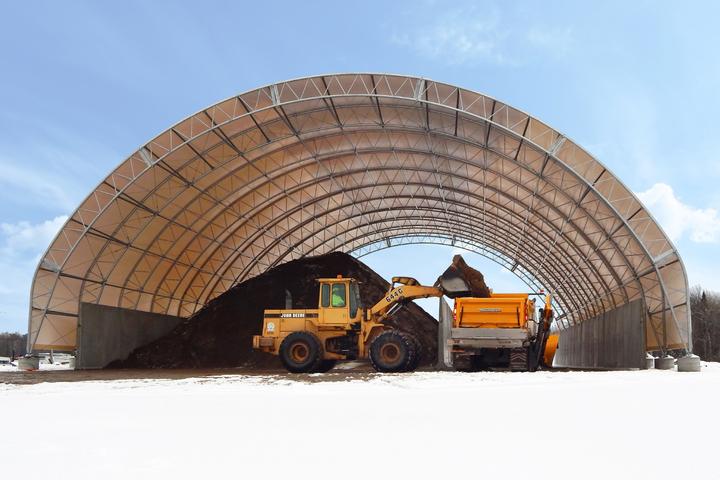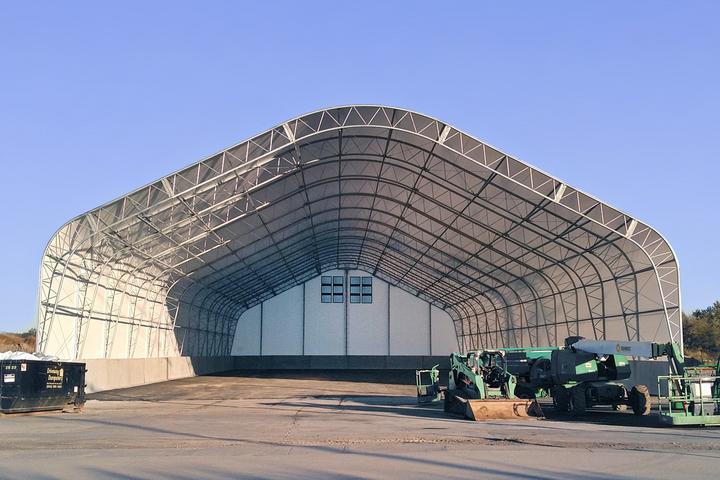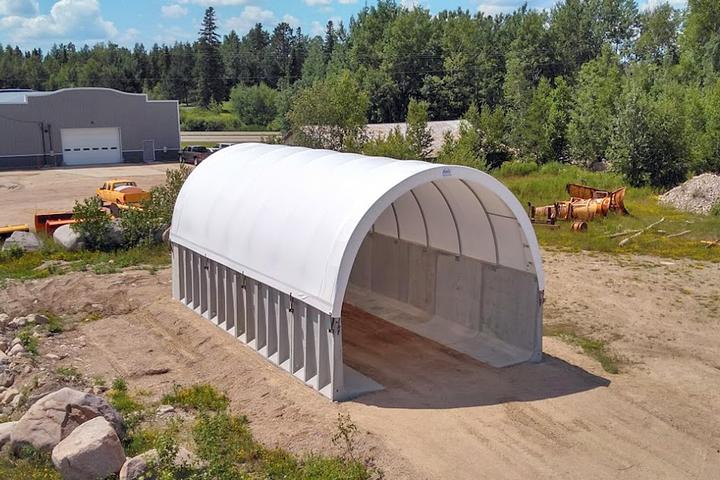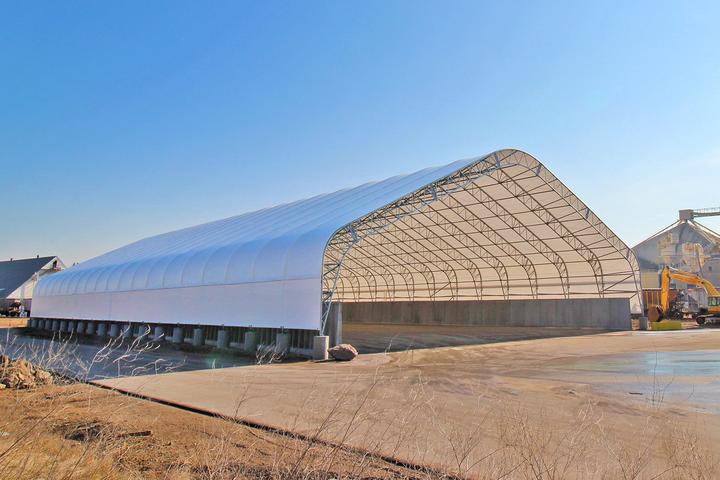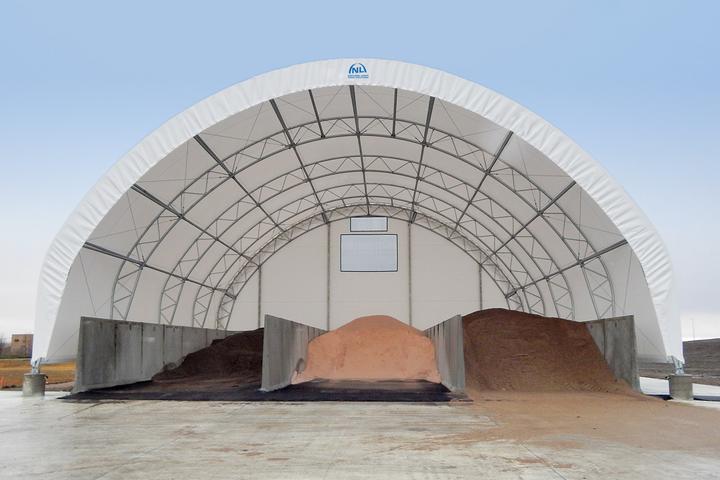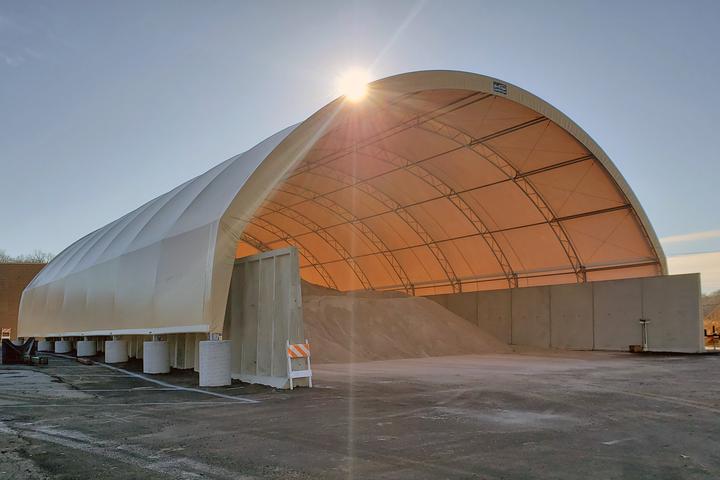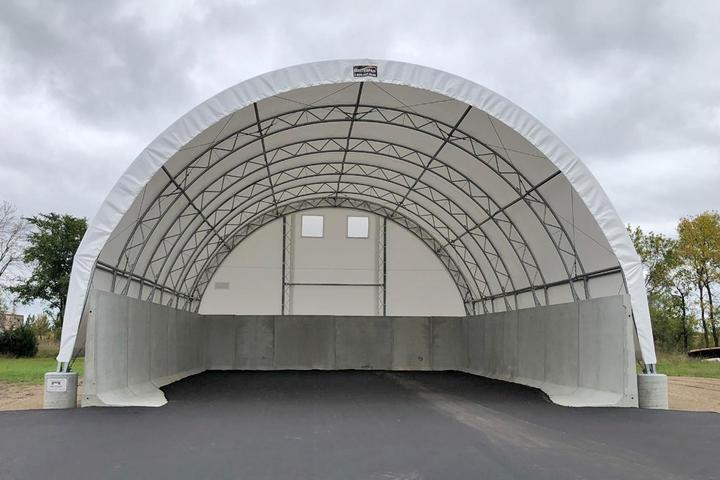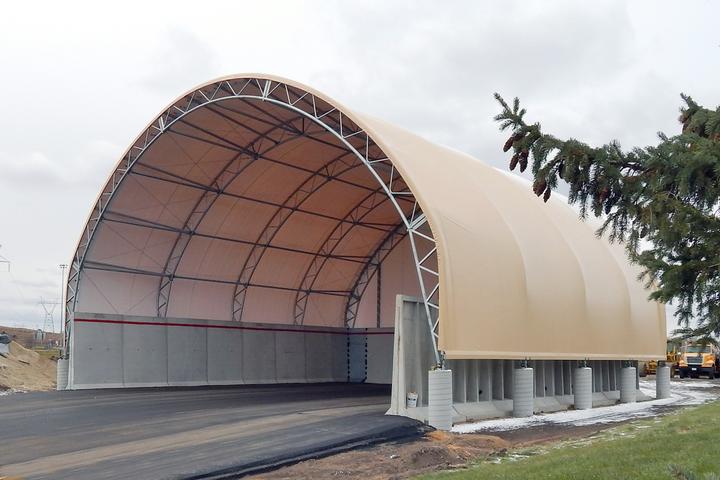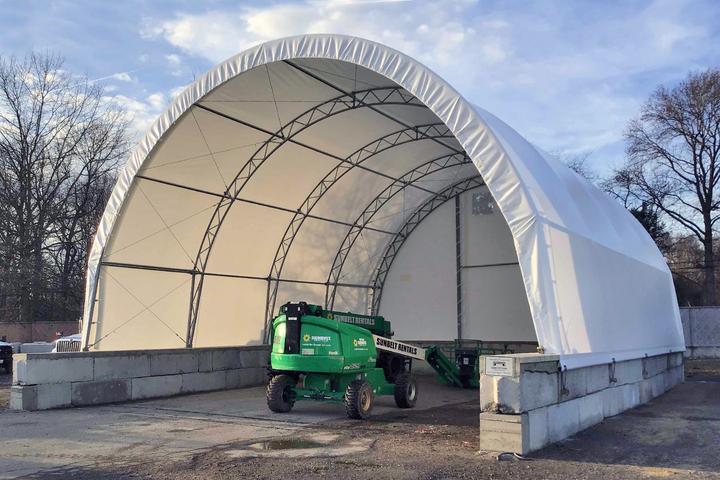Across the USA, we are trusted by hundreds of municipalities, DOTs, and private firms for salt storage building solutions.
Here are just a handful of the thousands of fabric buildings we've installed.

We are Fabric Building Experts
Go to our Fabric Building Website
Top 6 Building Design Factors for Sand and Salt Storage Buildings
We have a few best practices to share for planning efficient, safe and cost-effective facilities for salt storage structures.
1. Load Requirements
Any building needs to be designed to meet local wind, snow, seismic and unbalanced snow loads. Fabric buildings are no different. A structurally sound building must follow current International Building Codes (IBC) not just for safety, but for insurability.
2. Capacity Requirements
Greystone knows the density and angle of repose of deicing salt -- factoring this in with a customer’s storage capacity requirements and available footprint, their estimating team calculates the most economical building width and length.
3. Reducing Risk of Corrosive Damage
Salt is highly corrosive. We recommend all building steel be hot-dip galvanized after production. This treatment achieves a much thicker and harder protective surface than in-line galvanizing. It also ensures that the steel trusses are coated both inside and outside after welding is completed.
4. Ventilation
In the absence of moisture, corrosive materials would have little to no corrosive effect. You want air movement in your salt storage building to greatly reduce any condensation.

5. Consider Independent Foundations and Panels
The combination of independent foundations engineered to carry building loads and pre-cast walls designed to carry commodity loads is often times more economical than cast-in-place poured walls designed to carry both building and commodity loads.
This building design also excels in reducing corrosion because it keeps salt away from the steel trusses and base plates. It also creates the greatest possible air movement throughout the building.
6. Sufficient Clearance
Adequate clear height is a critical factor to ensure maximum storage capacity. More importantly, sufficient clearance is necessary for safe maneuverability of trucks and dumping equipment.
Read the entire facility planning article in the Municipal Magazine >

